The best gaming monitor in 2025: my favorite displays for gaming at your best
Game at your best with one of my best gaming monitor picks
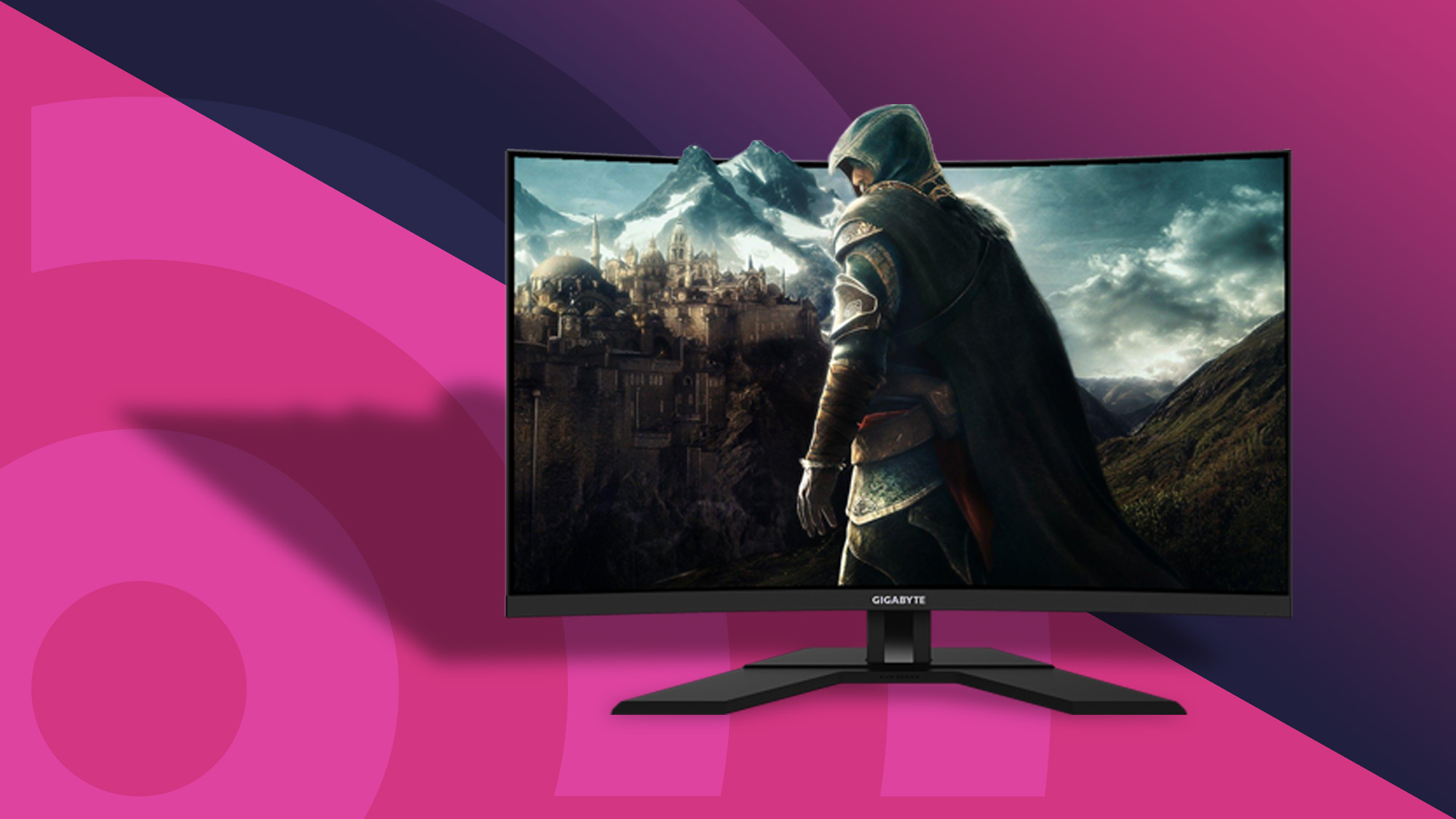
The best gaming monitor is going to give you the right balance between crisp resolution, speedy visuals, responsive input, and a great price, but finding the right balance for your needs can be a difficult task.
Fortunately, we've been covering gaming monitors for more than 15 years here at TechRadar, so we know what makes for a great gaming display and what will leave you disappointed in your investment.
Whether you're looking for a premium OLED ultrawide with a high refresh rate or a smaller 16:9 1080p display for a budget gaming build, we've tested countless gaming monitors from major manufacturers like Samsung, Asus, Gigabyte, AOC, HP, Alienware, and many more.
We've pulled together our top picks for the best monitors for gaming factoring in several different budgets, resolutions, feature sets, and more to help you find the right gaming display for your needs and budget.
Best gaming monitors: Quick List
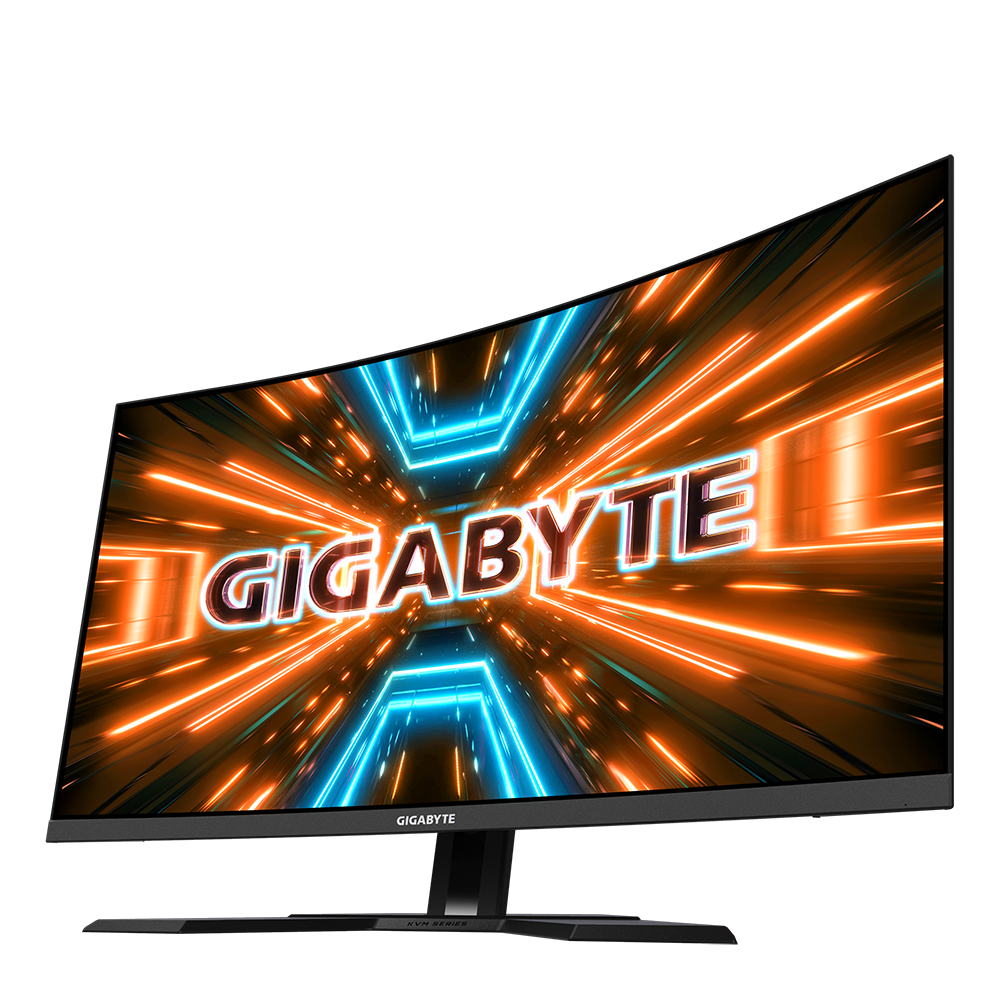
Best gaming monitor overall
The Gigabyte M32UC packs in a 4K resolution and a 144Hz refresh rate all for an all-star price point which few of its competitors can claim.
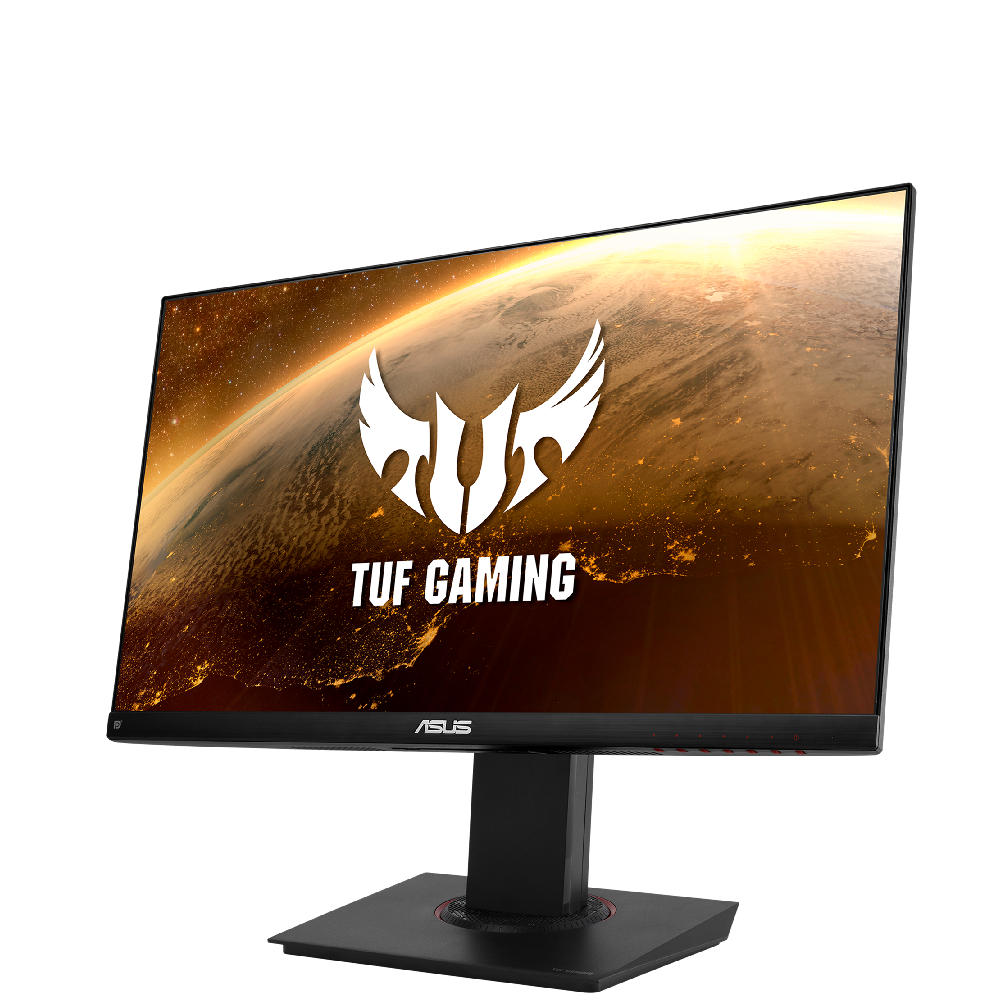
Best budget gaming monitor
The Asus TUF Gaming VG289Q is an outstanding value for the asking price. You get a beautiful 28-inch 4K display with all kinds of options for adjustments at an entry-level price range.

Best premium gaming monitor
The Samsung Odyssey OLED G9 doesn't come cheap, but it features a superfast 240Hz refresh rate, and an incredible 32:9 aspect ratio making the most of its extended 1440p resolution.
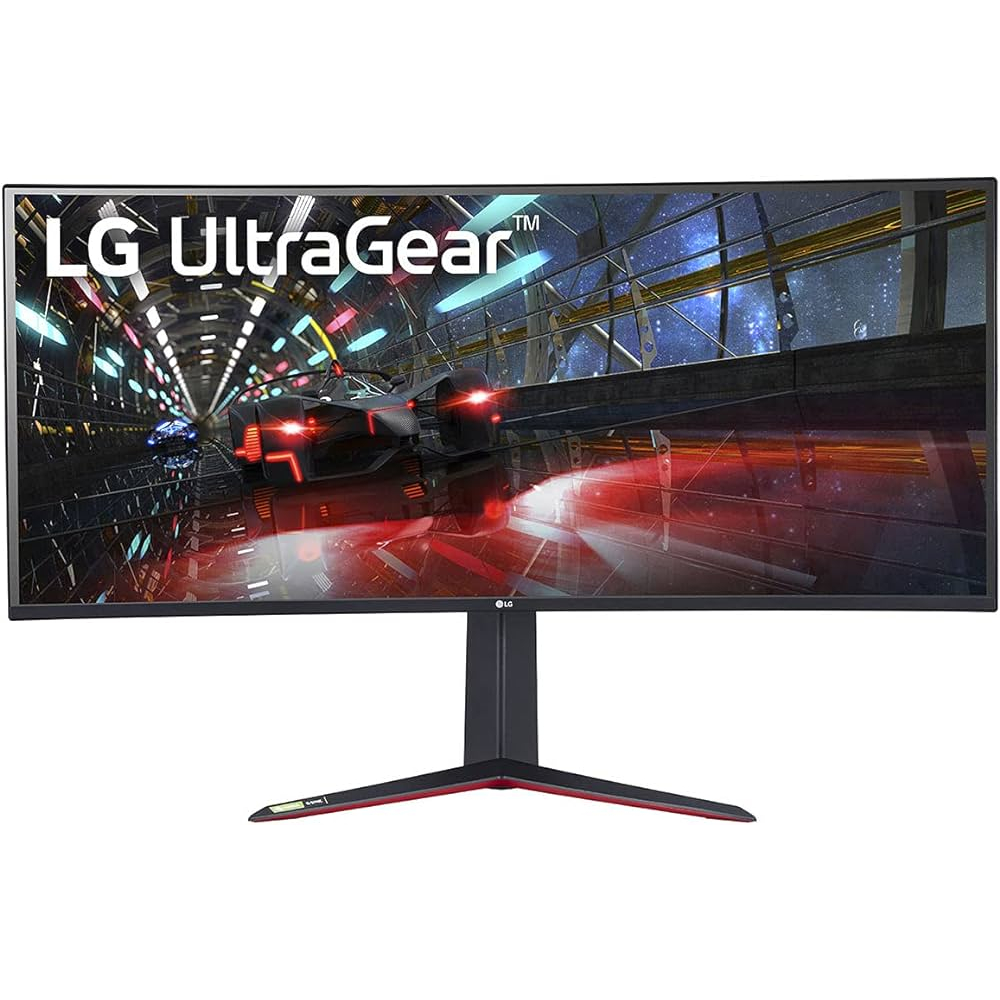
Best ultrawide gaming monitor
Striking the perfect balance between high refresh rate and high resolution, the LG UltraGear 38GN950 is an excellent 21:9 gaming monitor to suit most people's needs.
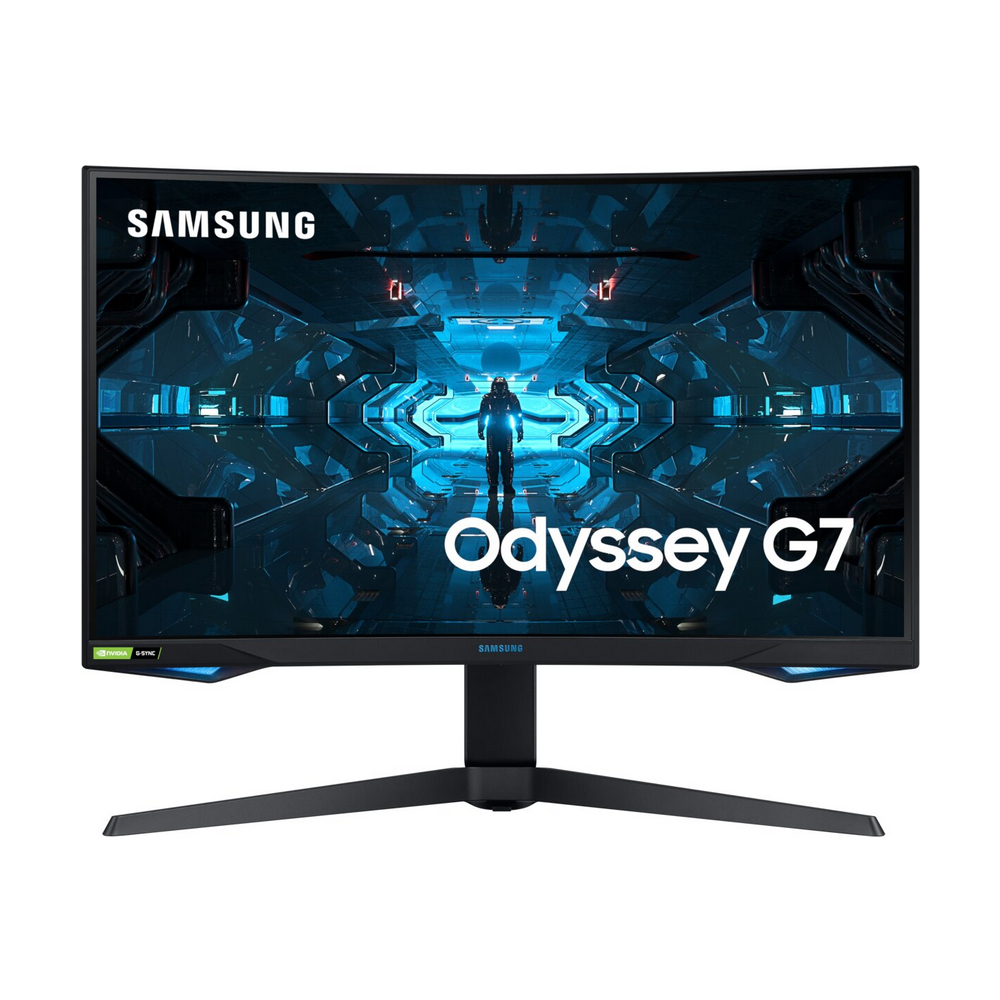
Best 240Hz refresh rate
The 27-inch Samsung Odyssey G7 excels thanks to its lightning-fast 240Hz refresh rate and good pricing in 2024.
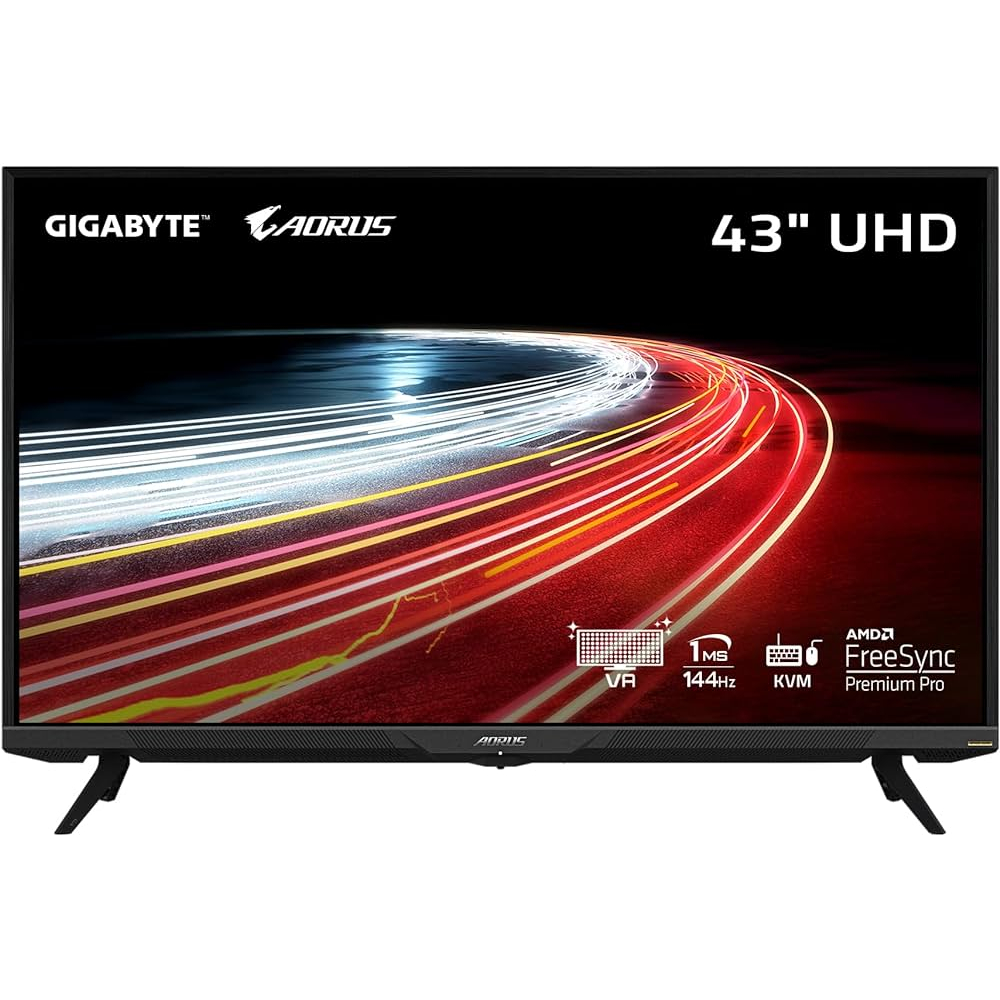
Best gaming monitor for consoles
The Gigabyte Aorus FV43U is an out-and-out TV replacement thanks to its 43-inch panel size and slick 144Hz refresh rate. That extra screen space makes it perfect for PS5 and Xbox Series X.
Load the next four products
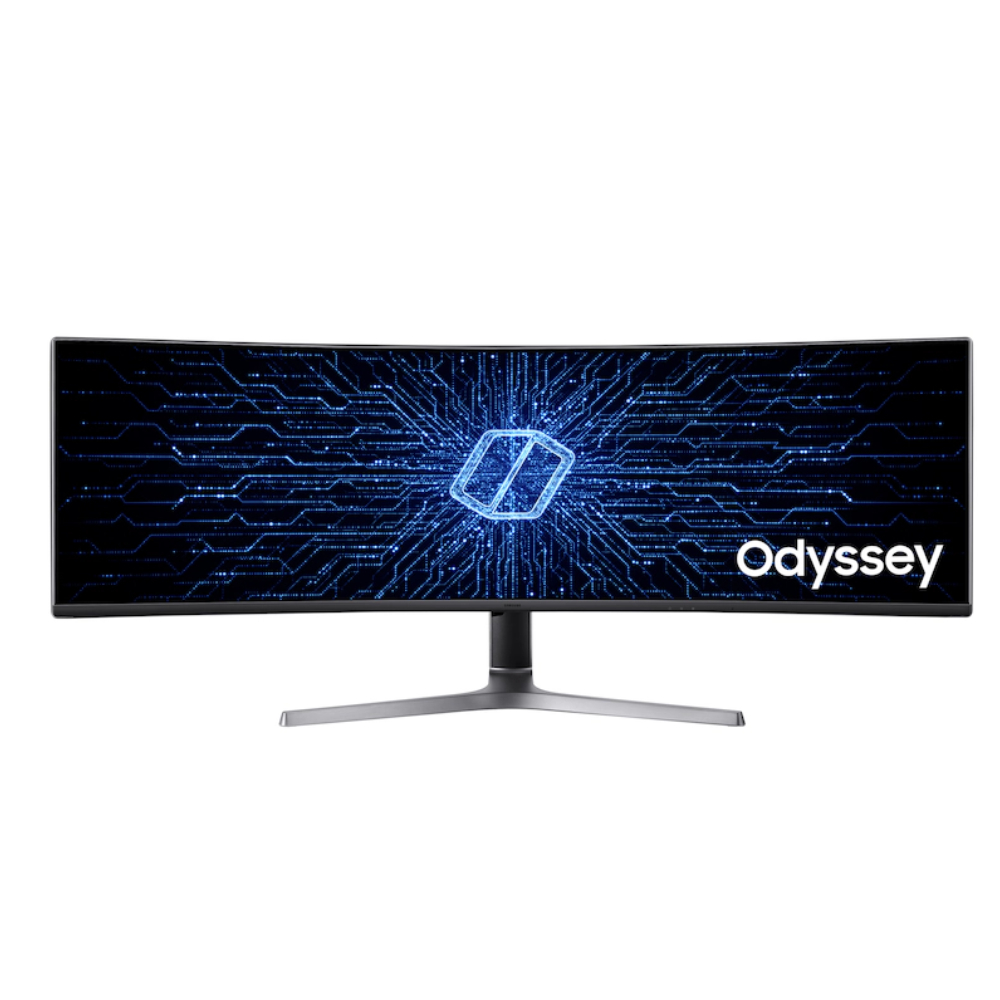
Best 32:9 gaming monitor
When it comes to 32:9 gaming monitors, the Samsung CRG9 reigns supreme thanks to its excellent refresh rate, 49-inch panel size, and strong HDR performance.
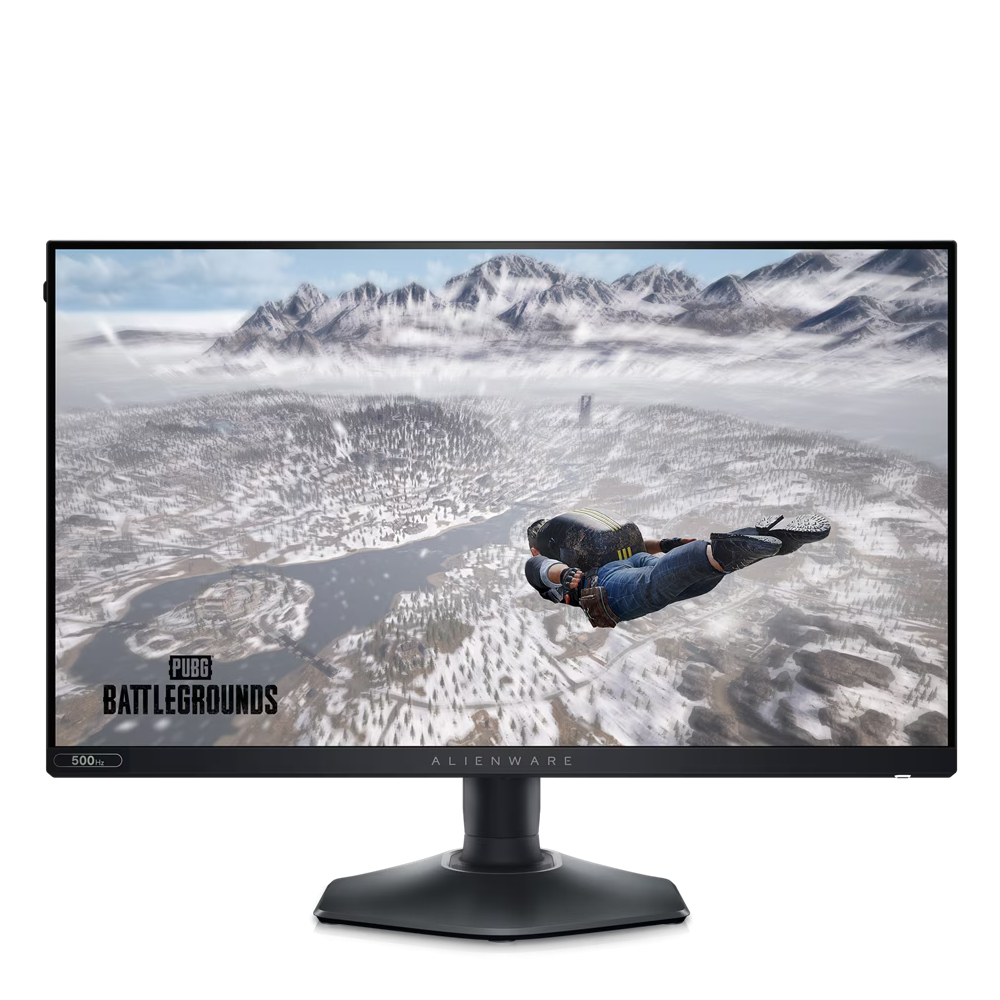
Best 500Hz gaming monitor
If you're into competitive gaming then you'll want to consider the Alienware AW2524HF thanks to its leading 500Hz refresh rate. It may be limited to 1080p, and the smallest monitor in our list, but for those wanting an edge in Esports, then it's the right choice for you.
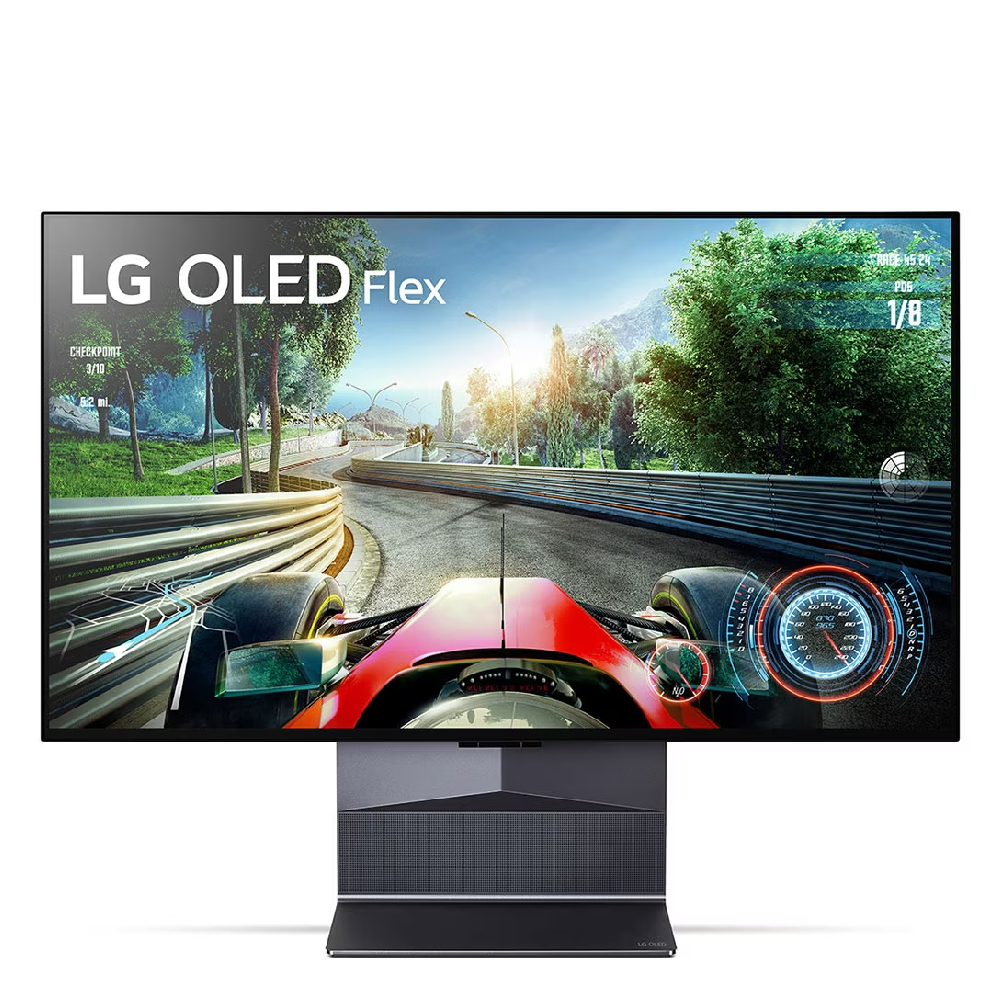
Best bendable gaming monitor
The LG OLED Flex is more than just a gimmick with its stunning panel tech and huge size. Thanks to its auto-bending capabilities, you can tailor how aggressive of a curve you want when gaming or enjoying media playback. However, it's the most expensive screen on our list by a considerable margin.
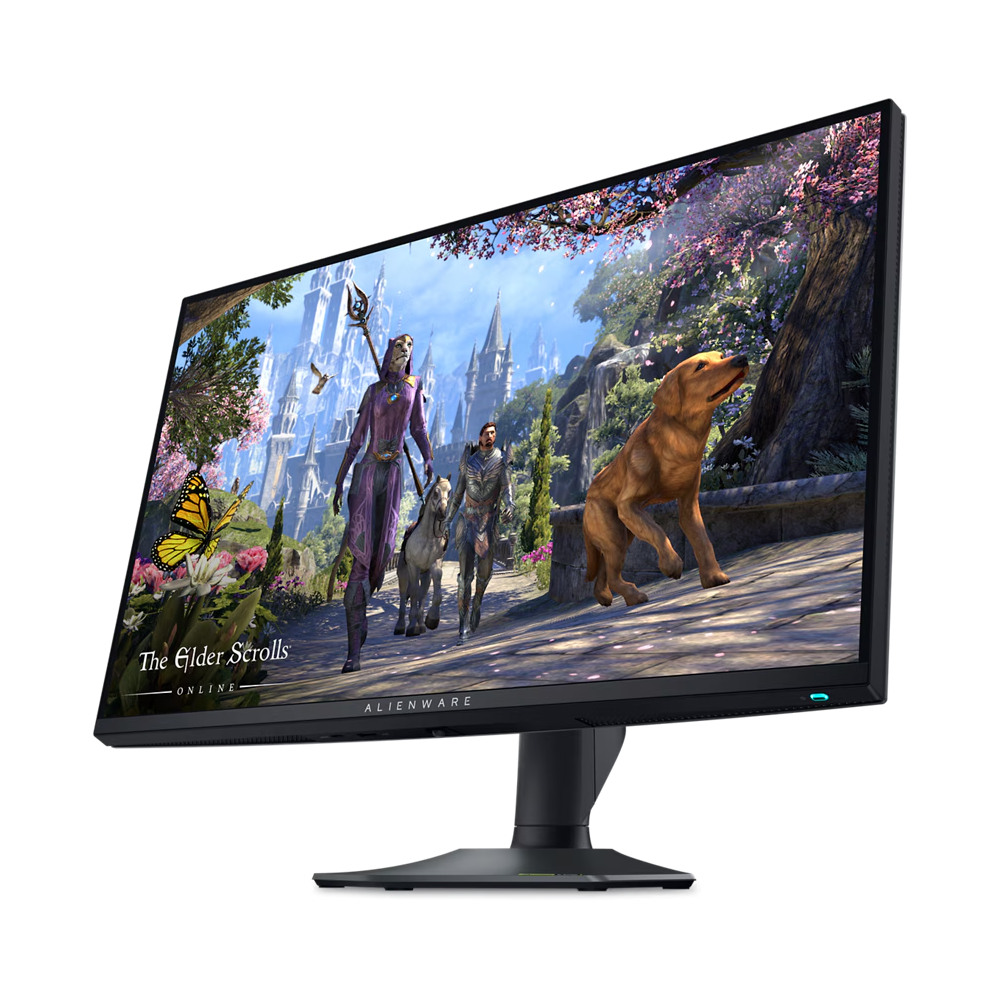
Best 2-in-1 gaming monitor
The Alienware AW2725QF is the perfect pick for anyone who enjoys gaming online with friends just as much as they like kicking back with a single-player indie title. Whether you want 4K 180Hz or 1080p 360Hz, this display has you covered.
The best gaming monitor in 2025
Why you can trust TechRadar
These are our picks for the best gaming monitor of the year, backed up by our extensive testing and review process, so you know you can trust our recommendations to find the right gaming monitor for your needs and budget.
The best gaming monitor overall
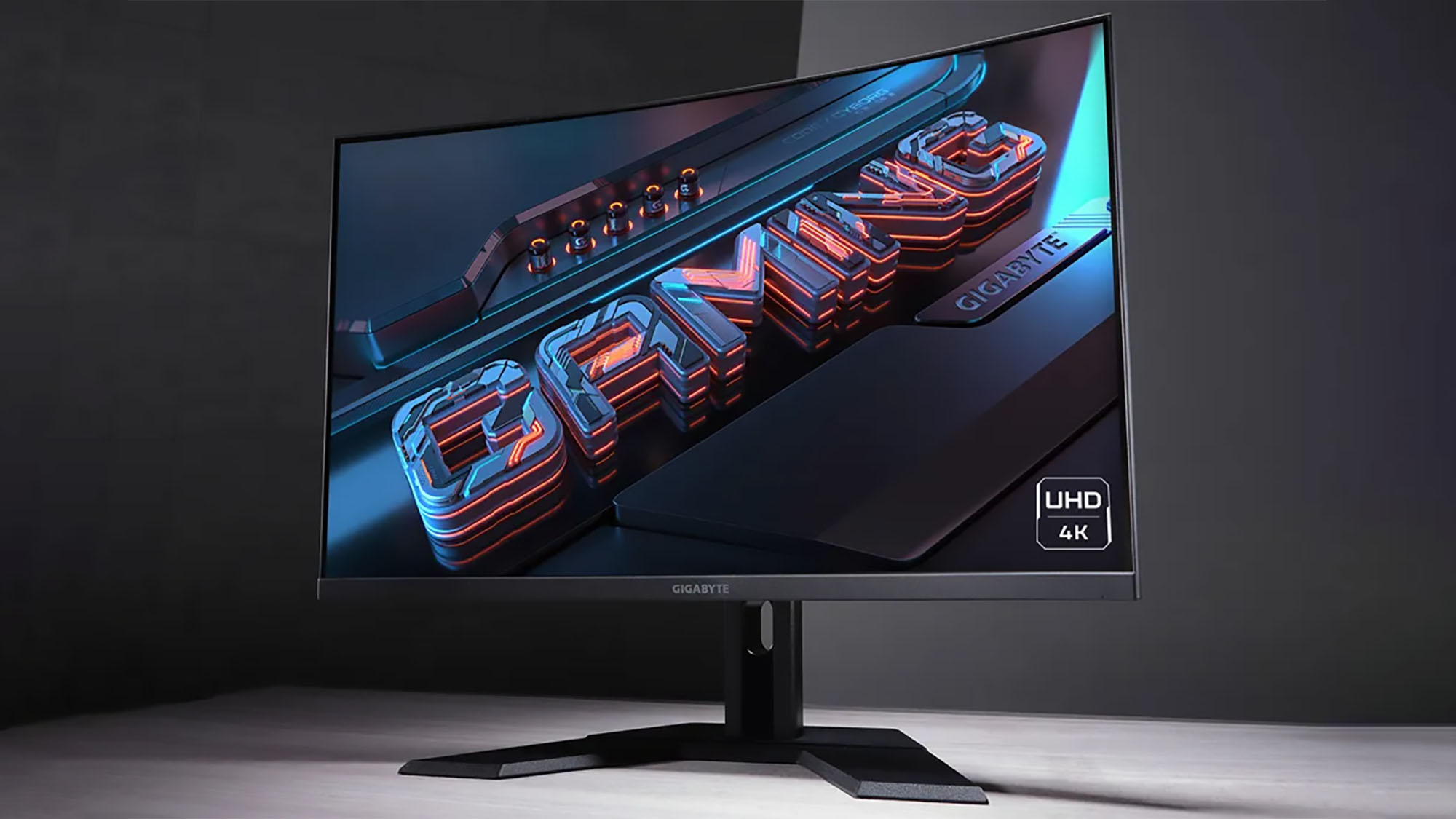
Specifications
Reasons to buy
Reasons to avoid
Multiplatform gamers looking for a high-performance 32-inch gaming monitor for 4K at 144Hz gaming will find a lot to appreciate here with the M32UC from Gigabyte. The HDR400 support is alright, but nothing special, but with a respectable amount of ports and other useful features, along with snappy pixel response time and great color gamut coverage, this is a great looking monitor with satisfying performance that recommend it on its own.
Don't expect much from the built-in speakers here, as they barely get the job done. but most serious gamers are going to have a solid headset or set of speakers anyway. And, you're getting two HDMI ports, one Display Por, and more than a handful of USB options as well as KVM system is a pretty cool addition for gamers looking to control their phone or tablet while gaming.
When you factor in the excellent price for this kind of curved display, you get one of the best gaming monitors by value on the market. Just be sure to calibrate it before using.
Read our full Gigabyte M32UC review
The best budget gaming monitor

Specifications
Reasons to buy
Reasons to avoid
With the Asus TUF Gaming VG289Q, you’re getting a lot of value for your money – especially considering the small price of entry. One of the most affordable 4K gaming monitors right now, this 28-incher can swivel, pivot and tilt practically however which way you need it (within reason, naturally) to serve your purpose.
Thanks to its picture quality and a design that is only subtly gaming-centric, this is among the best 4K monitors not only for gamers but for regular users who consume a lot of visual media as well. Its delivered flawless detail, impeccable sharpness, and vibrant, accurate colors with its 90% color gamut during testing, and we found it excellent not just for gaming but media consumption as well.
It also has deliciously thin bezels and a nifty cable management solution, as well as a few display settings to boost your viewing experience. If you're seeking a budget gaming monitor, this is the one to get.
To save money on Asus products, check out our Asus promo codes.
Read our full Asus TUF Gaming VG289Q review
The best premium gaming monitor
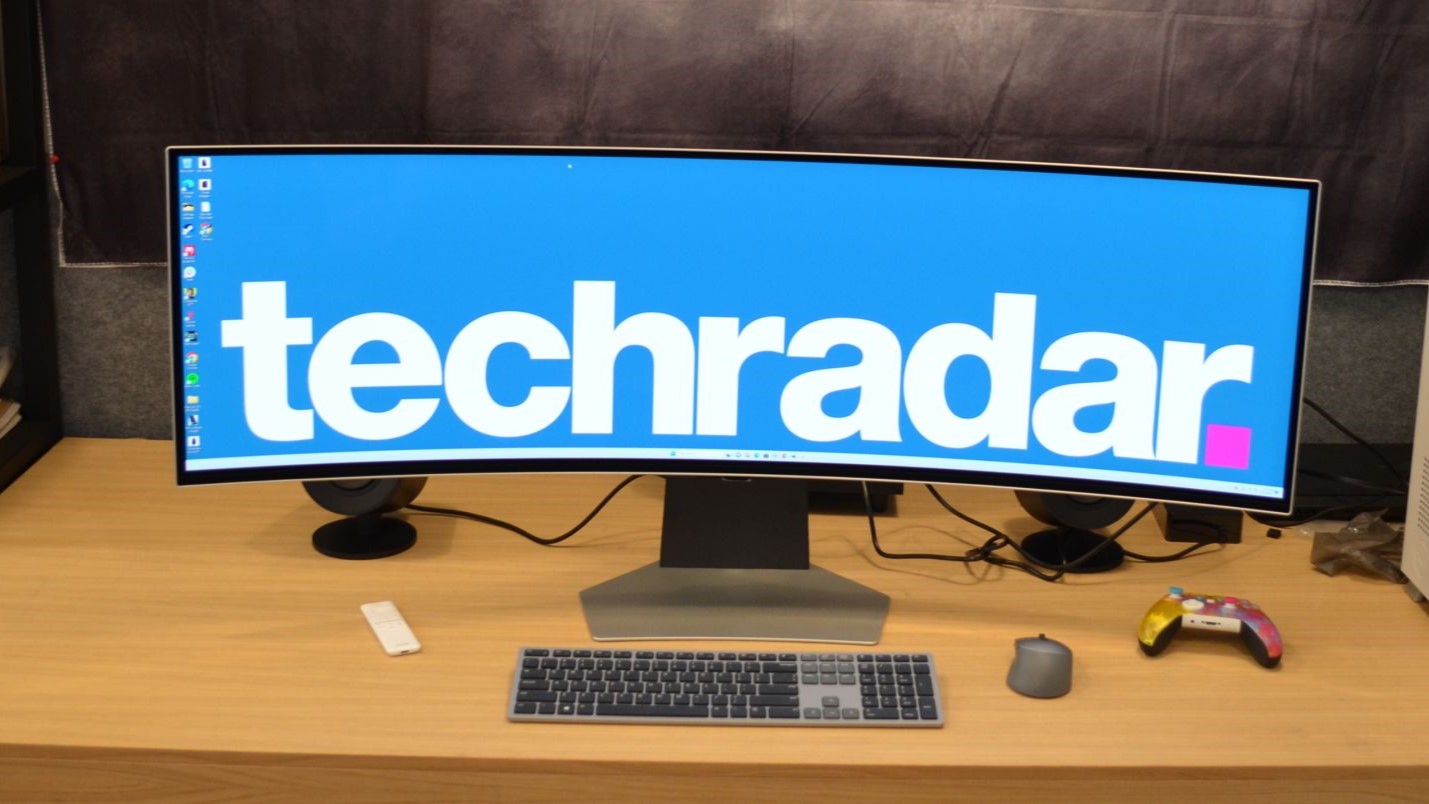
Specifications
Reasons to buy
Reasons to avoid
The Samsung Odyssey G9 has always been an expensive gaming display, and that hasn't changed in this new refresh. Now with an OLED panel, this new refresh to the line is probably even worth the investment, however, improving on its predecessor in nearly every way.
When paired with the right graphics card - you're going to need a powerful PC to drive this one - Titles like Forza Horizon 5 and Doom: Eternal looked absolutely phenomenal on this during our testing, especially with that ultrawide 32:9 aspect ratio. And its color accuracy averaged around Delta-E < 1 in use, with sRGB scoring 143 under gaming display modes and around 194 in other modes, and DCI-P3 staying almost entirely at 137 unless in almost every gaming mode.
There is one major design flaw that does damper an otherwise amazing experience: the UI itself, which is so unbelievably clunky and complicated. And again, this is something most people cannot afford - or perhaps shouldn't buy if they don't have a robust PC to pair with it. However, if you need or want the best ultrawide monitor out there, this is the one to get.
Read our full Samsung Odyssey OLED G9 review
The best ultrawide gaming monitor
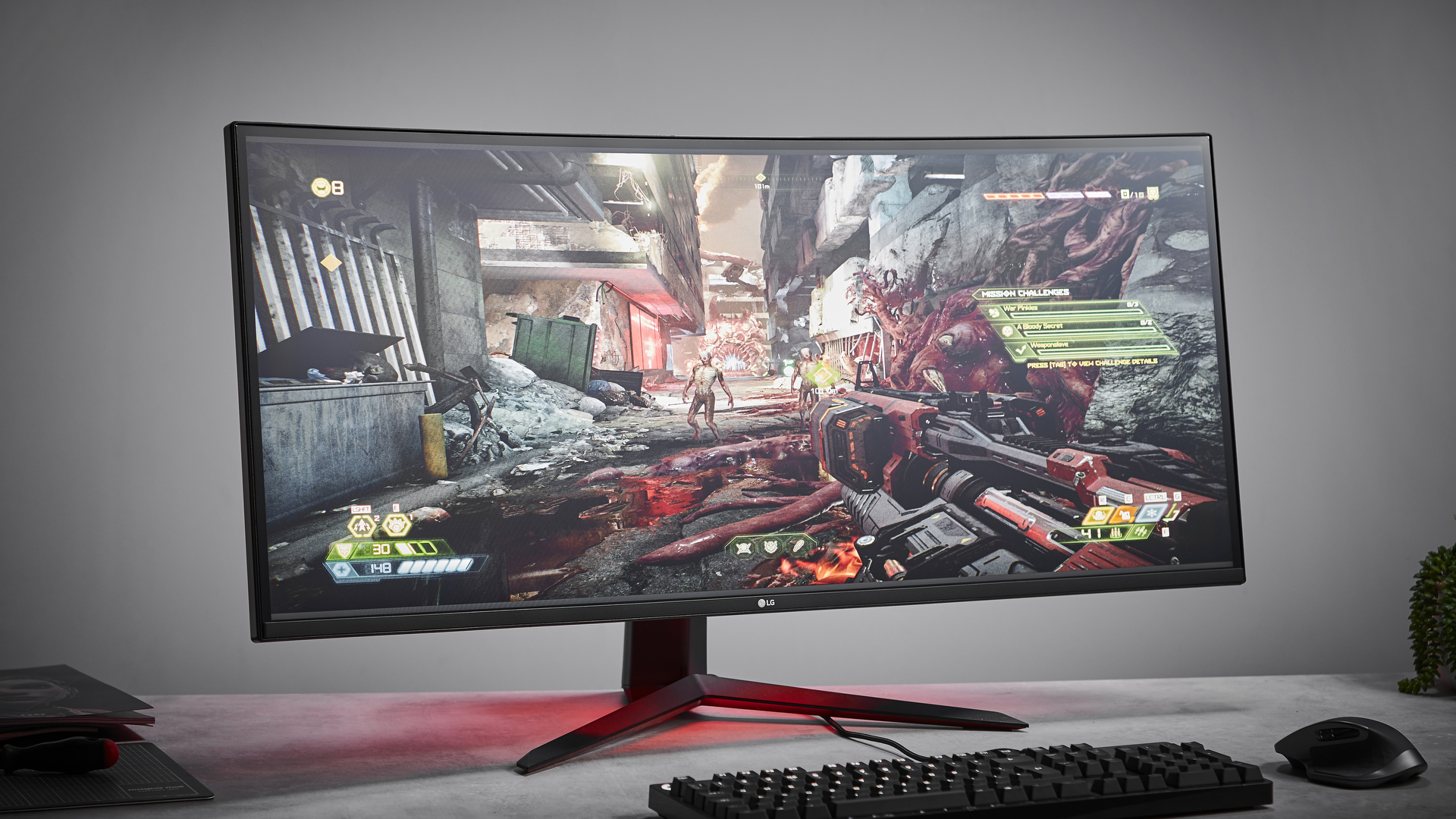
Specifications
Reasons to buy
Reasons to avoid
It’s hard not to be impressed by the LG UltraGear 38GN950. If you’re looking for the ultimate gaming monitor, this is certainly the one to beat, with a 144Hz refresh rate that can be easily overclocked to 160Hz, 1ms response time, spectacular image quality, and many other gaming features like G-Sync, an ultra-wide aspect ratio and DisplayHDR 600.
This is an incredibly good-looking monitor even before you’ve even turned it on, with a series of lights that can sync with music or visual effects in the rear and its ‘virtually borderless’ bezels. Turn it on, and it's even more impressive. That 21:9 ultra-wide aspect ratio certainly delivers the wow factor, making games feel more cinematic, while its specs allow for an enjoyable experience, allowing us rip and tear our way through hordes of demons with silky-smooth action, without screen tearing, during testing.
If you’re serious about gaming and want lots of screen real estate, then this is the best gaming monitor to get. If you can afford it, that is.
Read our full LG UltraGear 38GN950 review
The best 240hz gaming monitor
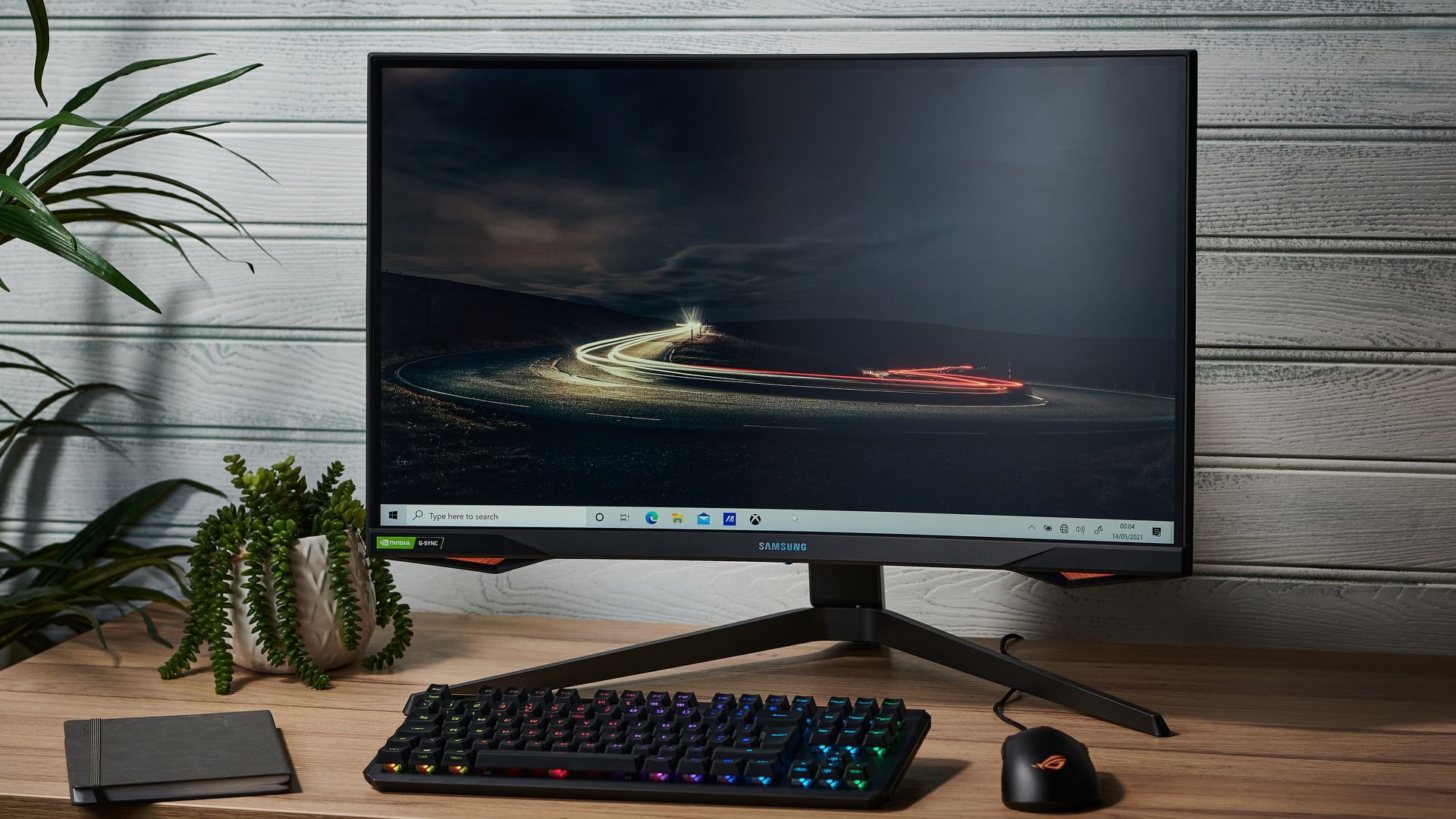
Specifications
Reasons to buy
Reasons to avoid
The best gaming monitors typically fall into two camps: fast refresh rate or high resolution. But, they almost never do both. With the Samsung Odyssey, that’s not the case. It manages to pack 1440p resolution in the same display as a 240Hz refresh rate as well as excellent HDR, making this an ideal choice for any gamer that likes to play Esports one day and jump into an immersive open-world game the next.
Despite the VA panel used, we didn't experience any issues during our testing, which says a lot about this particular monitor given that the tech is associated with issues like motion blur, ghosting and lag. In fact, you'd be forgiven for mistaking it with an IPS panel given how good the colors and vibrancy are. Although to get to that point, you might have to do some calibrating.
It’s not perfect as it does take some work getting it up and running. But the Samsung Odyssey G7 is an ideal choice for gamers who have some variety in their gaming libraries.
Read our full Samsung Odyssey G7 review
The best gaming monitor for PC and console
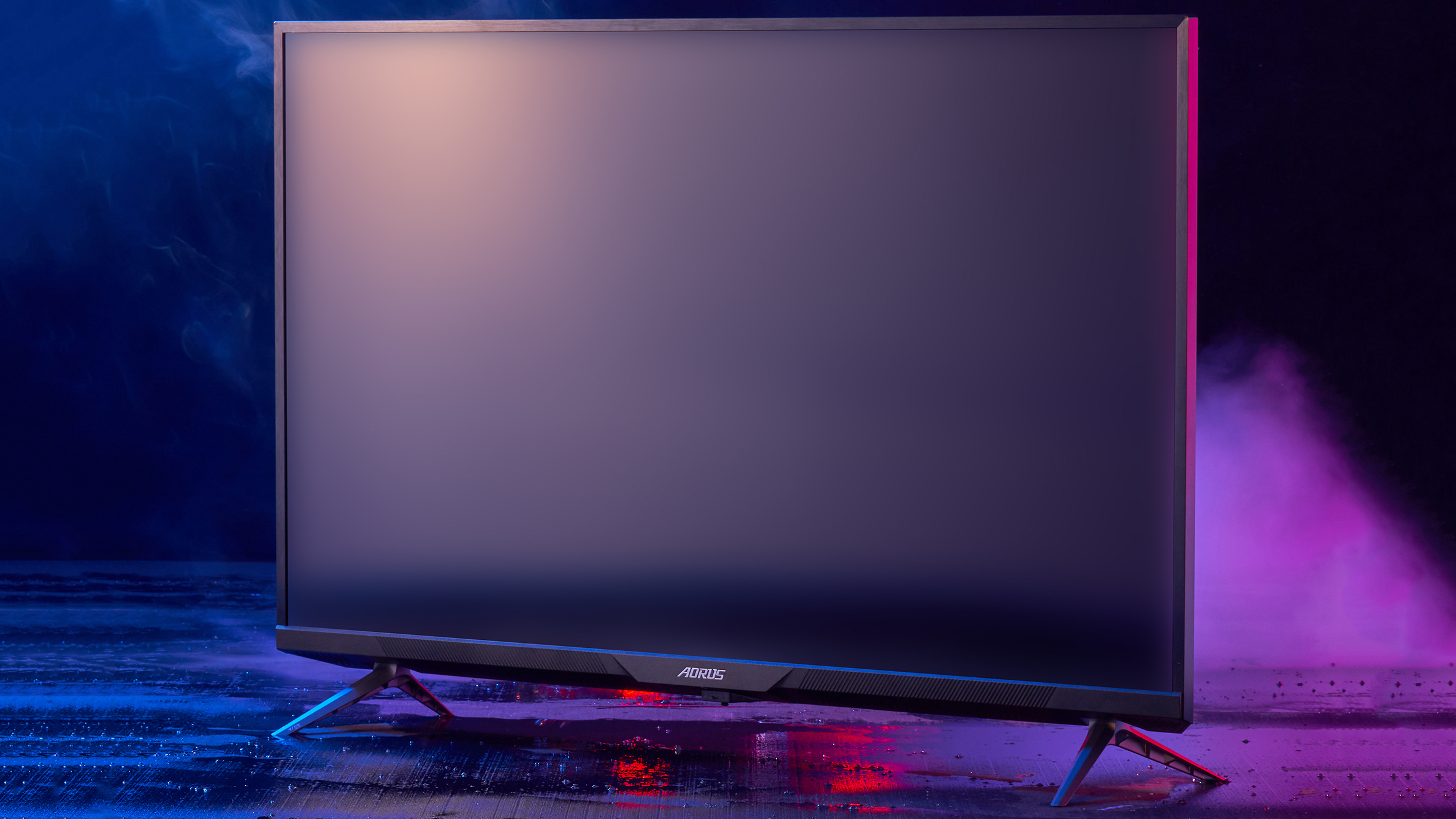
Specifications
Reasons to buy
Reasons to avoid
A 43-inch display may be too big for many users, but it might just be what you need if you’re a competitive gamer. That 4K QD goodness offers better technical performance than a big-screen TV, and it comes with everything you need from a gaming monitor.
Sitting up close to this monster initially feels like you’re a naughty two-year-old staring at the TV from way-too-close. But, set this one in your living or gaming room, and you'll have a fast refresh rate, matte screen and gaming-optimized settings, as well as that 1,000 nits of brightness, making it better than most TVs. And, unlike other monitors, it comes with a great set of speakers too.
The colors are vibrant and viewing angles better-than-average, we've found, and the 144Hz refresh rate does a terrific job of keeping motion buttery smooth for fast-and-frantic gaming while ghosting and motion blur are kept at bay. Thanks to that HDR support, HDR-enabled games also look phenomenal.
Read our full Gigabyte Aorus FV43U review
The best super ultrawide gaming monitor
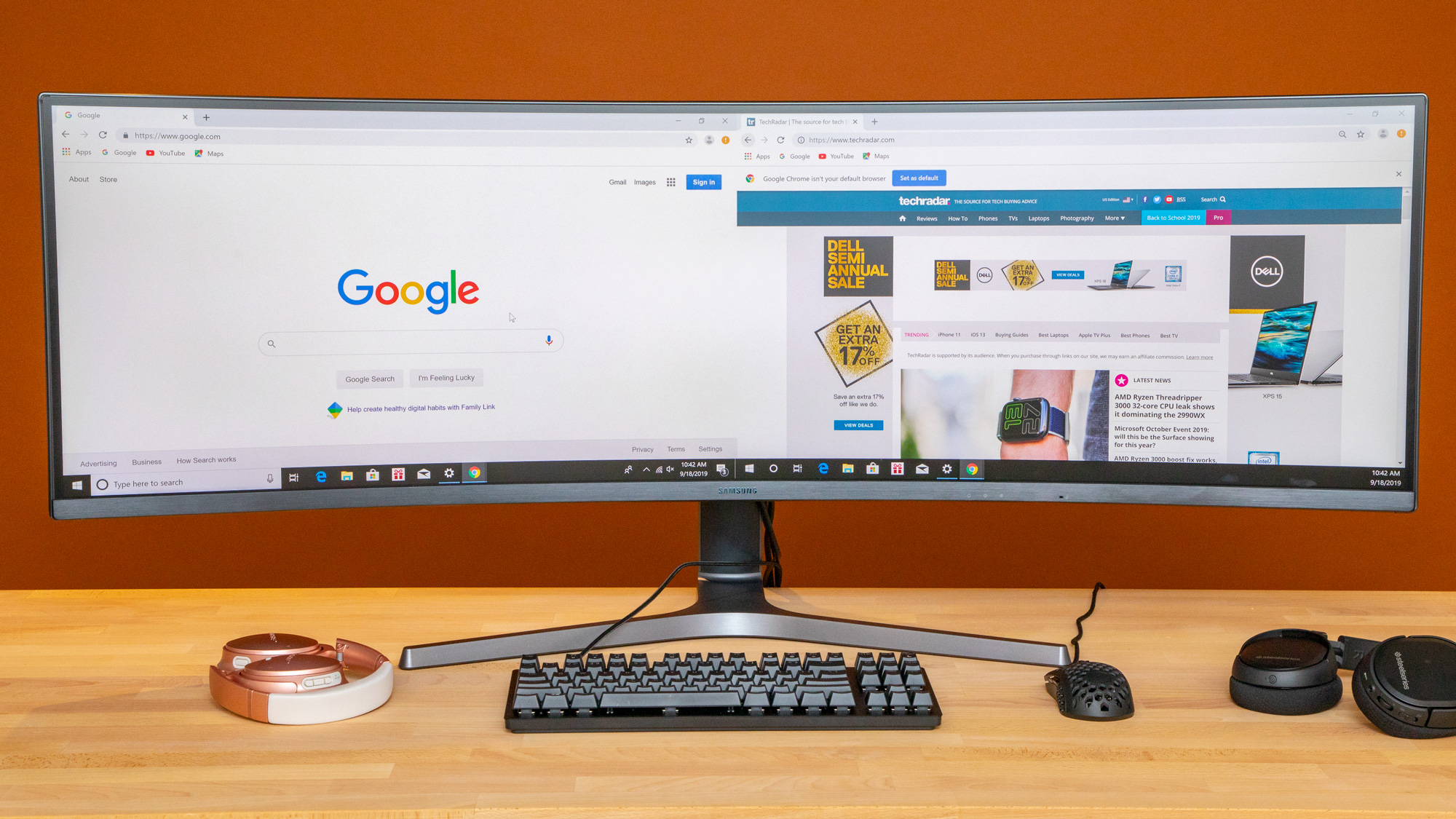
Specifications
Reasons to buy
Reasons to avoid
It may be very expensive and requires a killer gaming PC setup to run, but the Samsung CRG9 is completely worth it if you’ve got the extra cash laying around. This bigger-than-average 49-incher boasts bezels thinner than most gaming monitors and a picture by picture mode feature that lets you use two different inputs, simulating a dual monitor setup in a single monitor.
This super ultrawide display produces an out-of-this-world image right out of the box, so much so we didn't feel the slightest need to go around fiddling with all the settings during testing. The colors look beautiful, as if the visuals are popping out of the screen, and everything feels extremely responsive.
For most people, the Samsung CRG9 probably isn't worth it. But, if you have the money, you're certainly getting an epic gaming performance. And, that’s without mentioning its HDR 1000 support.
Read our full Samsung CRG9 review
The best 500Hz gaming monitor
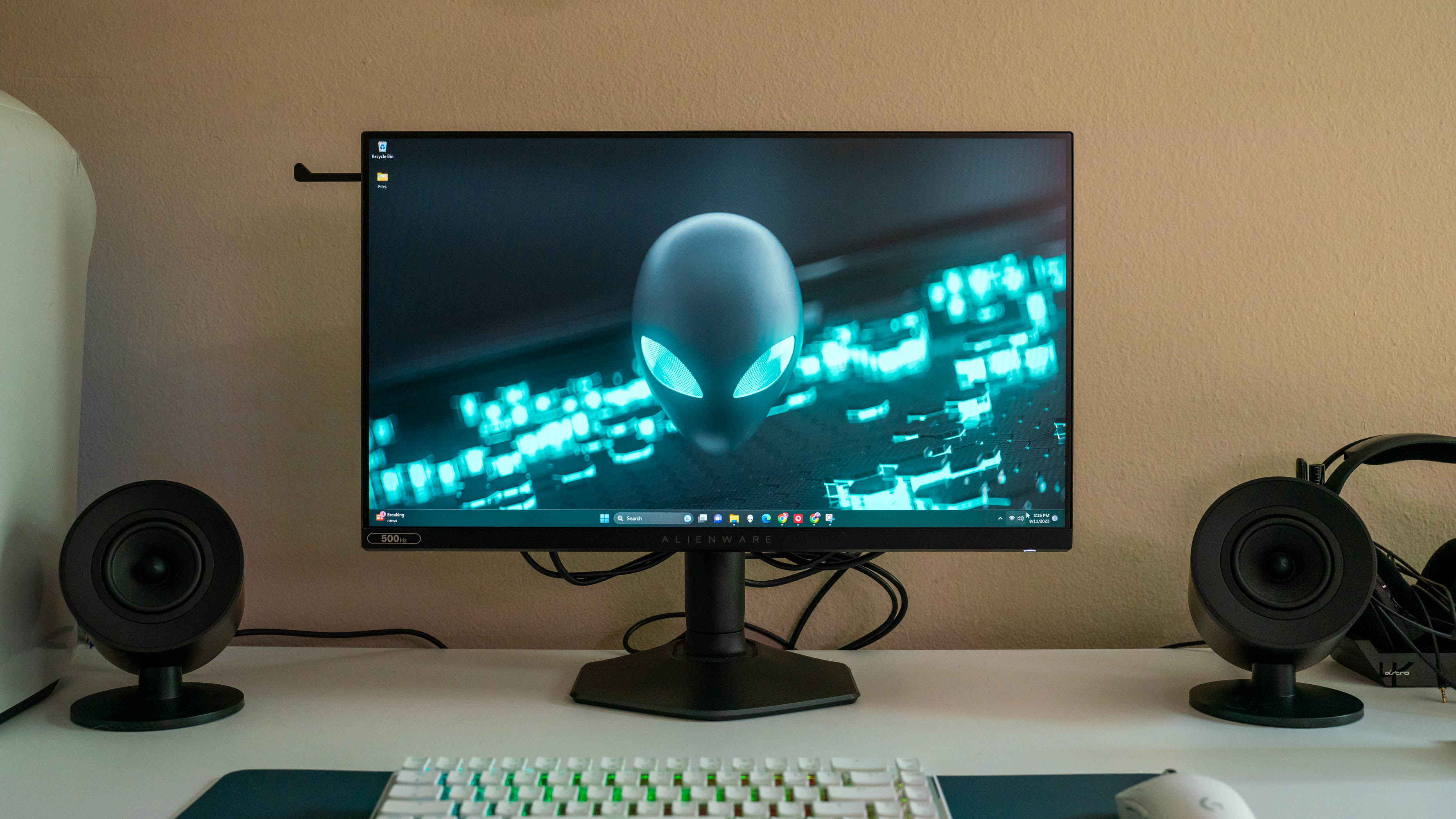
Specifications
Reasons to buy
Reasons to avoid
One of the biggest selling points of the Alienware AW2524HF is its incredible 500Hz refresh rate, which blows past most other gaming monitors in the market by a wide margin. And while that is an excellent feature on its own, this monitor has plenty more positives. It supports AMD FreeSync Premium support, which complements the refresh rate and lightning-fast response time, which was most apparent when we tested this out with first-person shooters and other esports games that require little to no latency.
Brightness is extremely high and couples well with the display’s great picture quality, enhancing gameplay even more. The gaming monitor also has two DisplayPorts 1.4 that fully support its refresh rate and response time. All this at a price that’s more affordable than the previous iteration, which is its own triumph.
However, some caveats come with this monitor. One of the biggest is that your gaming rig needs to be able to support this monitor’s specs, so if you have a more outdated model then you’ll need to look elsewhere. The monitor stand is a huge design fall, as it's simply not hefty enough to prevent the whole screen from wobbling when moved. Its HDR is fine but nothing amazing, which is disappointing considering that its price point is still quite expensive.
Read our full Alienware AW2524HF review
The best bendable gaming monitor
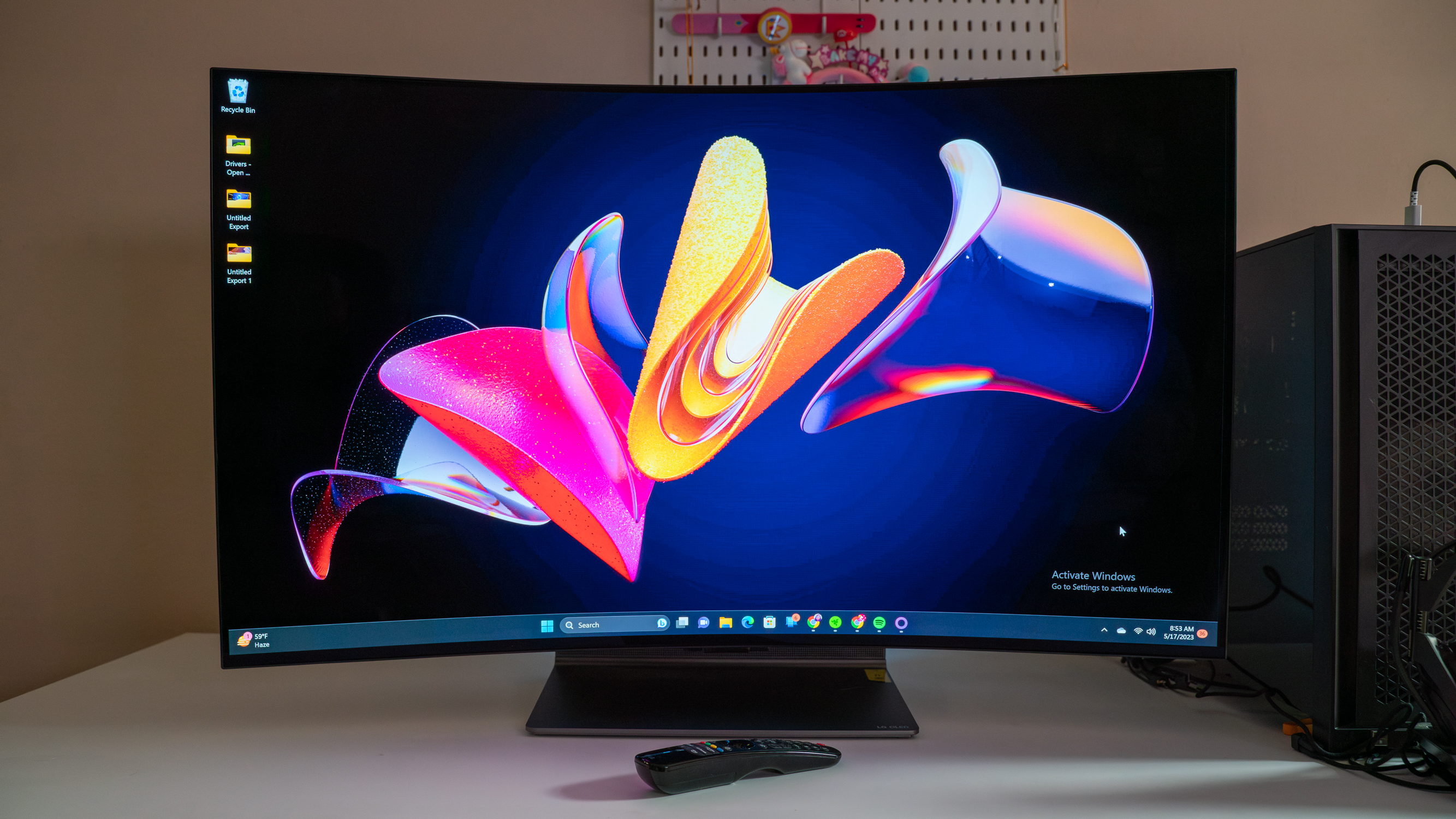
Specifications
Reasons to buy
Reasons to avoid
Though bendable monitors are still fairly new – not to mention, expensive – there is a clear need for them in the PC gaming space, being versatile enough to give you the best visuals whatever genre you’re into at any given time. Despite being one of the early implementations of the tech, the LG OLED Flex delivers that bending capability with such elegance it gives you a pretty accurate preview of what future gaming monitors should look like.
It’s its auto-bending capability, which allows you to control the curvature settings with just a press of a remote button, that’s the scene-stealer here as it made our early experience with the tech a much more seamless and enjoyable experience. But we also got butter-smooth visuals, even when playing competitive and fast-paced titles, as well as sharp, detailed, and clean picture quality.
This isn’t going to be the best choice for everyone considering its steep price and massive footprint. But, it certainly makes the best gaming monitor for certain users, and the fact that it moonlights as a smart TV essentially means you’re getting two devices in one.
Read our full LG OLED Flex review
Take a look at our LG promo codes to save on your next LG monitor.
Check out our HDR Explained video below.
The best 2-in-1 gaming monitor
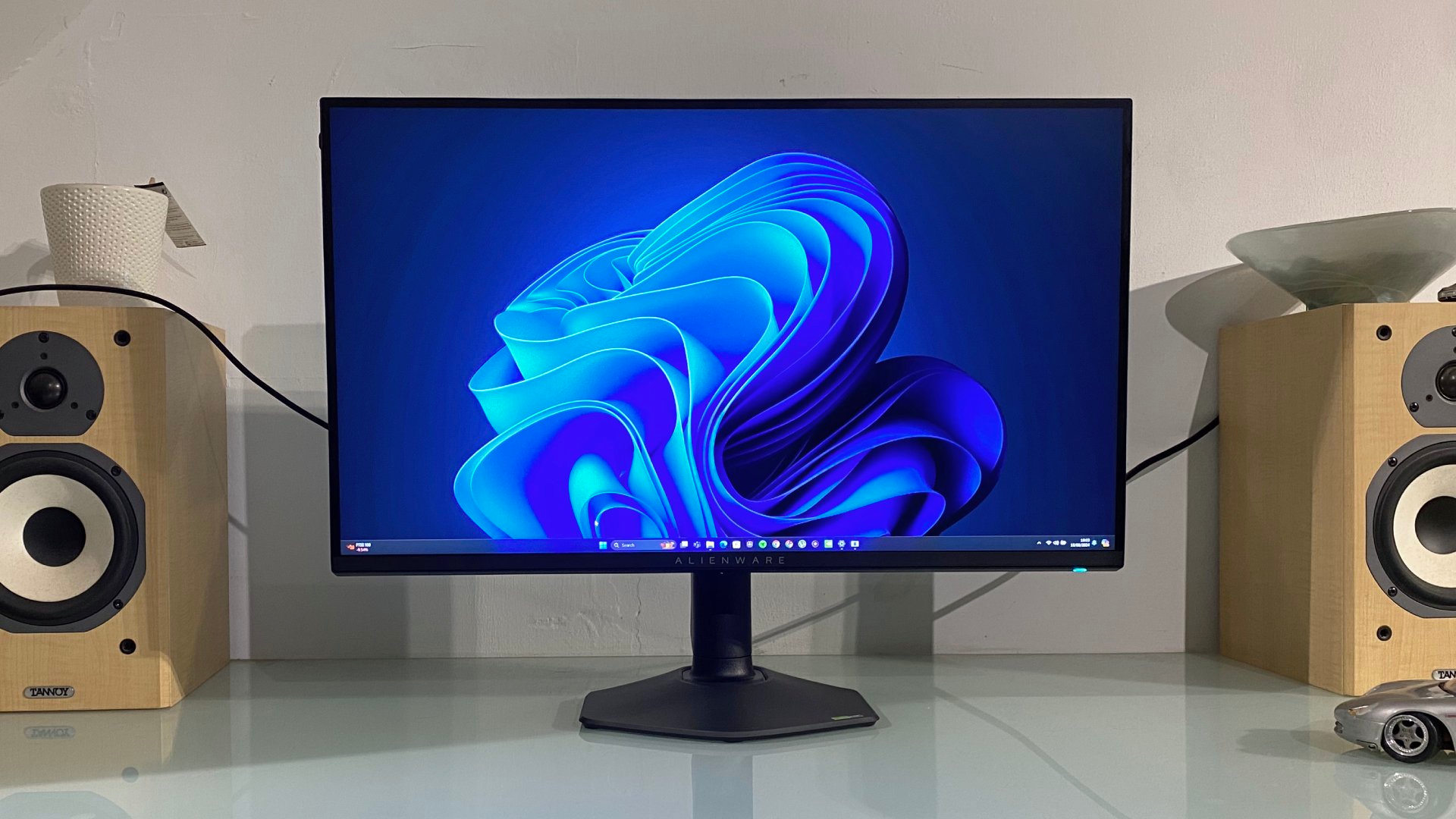
Specifications
Reasons to buy
Reasons to avoid
If you're into multiple types of gaming, specifically online competitive play as well as single-player story driven narratives or indie titles, you'll want two different kinds of displays.
On one hand, for competitive online titles, you'll want something extremely snappy, with a high refresh rate, virtually no input delay, and a crisp picture so as not to miss any important information.
On the other hand, with single-player titles, the focus is on how immersive the game's graphics can look, how well the game can pull you in through the screen. For this, you'll want something with a high resolution and excellent color support.
This sounds like two different monitors, but the Alienware AW2725QF blends the best of both worlds in one. Whether you want a 4K 180Hz marvel of a display, or a lightning-quick 1080p 360Hz gaming monitor that can keep up with the best of the best, the AW2725QF can do it all with the flip of a switch.
Read our full Alienware AW2725QF review
How to choose the best gaming monitor for you
How to choose the best gaming monitor for you
If you're in the market for the best gaming monitor, know that there are a few things to keep in mind before choosing which display should grace your desk.
You’ll want to familiarize yourself with the following terms and specifications to help guarantee that you’re getting the best gaming monitor that’s most ideal for you. It also means you won’t have to pay extra for additional features that you might not care about.
Screen size: When looking for a gaming monitor, one of the most important things to consider is the screen size. Larger display sizes can lead to more immersive gaming experiences as the game fills more of your field of vision, but you'll also have to make sure that you have the space to keep a large monitor. And, it goes without saying that the larger the monitor, the higher the price as well.
Aspect ratio: The aspect ratio of a gaming monitor helps determine the width and height of the display. Most widescreen monitors have an aspect ratio of 16:9, while older monitors have closer to a square format of 4:3 which might feel pretty out of date in 2023. Ultra-wide monitors with aspect ratios of 21:9 are rapidly growing in popularity, as they offer a wider view of your games, which is why many ultra-wides have made our list of the best gaming monitors in 2023.
Resolution: One other critical factor to consider when searching for the ideal monitor for your needs is the resolution. The higher the number, the sharper the picture. You will, however, require a more powerful graphics card for anything over Full HD (1,920 x 1,080), even if many gaming monitors feature resolutions as high as 2,560 x 1,400 (WQHD) and 3,840 x 2,160 (4K).
Refresh rate: When you’re mostly looking to play Counter-Strike and other first-person shooters like it, refresh rate is even more vital. The higher the refresh rate, the more frames per second (fps) the monitor can support, leading to a considerably smoother gaming experience. A 60Hz refresh rate is still the most common in 2022, and there are some 120Hz 4K monitors as well. However, refresh rates of 144Hz and even 200Hz are becoming more prominent – not to mention, more and more necessary.
Response time: An excellent gaming monitor offers low response times, which means you’re getting fast and fluid actions, with little to no input lag. The lowest response time for TN monitors (we’ll get to this in the next section) is 1 millisecond, whereas the newer IPS monitors typically have slower 4ms response times. When you’re playing games competitively, it’s vital to keep this number as low as you can to avoid latency.
Panel type: This is where things get a little technical. The type of panel a gaming monitor uses will largely contribute to its response time and image clarity. TN (twisted nematic) panels, which are often more affordable, have the lowest response times but usually don’t come with great viewing angles. IPS (in-plane switching) panels, on the other hand, have fantastic viewing angles and color reproduction, but usually have higher response times. Meanwhile, VA (vertical alignment) panels are between the two, although its slow response times make these panels rare in the gaming world.
Viewing Angle: While most people play games right in front of their gaming monitor, this isn’t always the case, particularly when there is an audience. A monitor’s viewing angles tell you what angle you can look at the monitor from and still make out a clear image. The closer these numbers are to 180, the better your viewing experience will be when standing further to either side of the monitor or looking at it from above or below.
G-Sync and FreeSync: You've probably noticed that many of the best gaming monitors in 2022 come with either G-Sync or FreeSync technology – sometimes even both. These help keep frames per second (fps) smooth, combat screen tearing, and minimize input lag. G-Sync is developed by Nvidia, so it requires an Nvidia GPU. And, the tech is built into the monitor, which can bump up their price tag. FreeSync, on the other hand, was made by AMD. Since it is free to use by manufacturers, the monitors that have them are usually more economical.
Best gaming monitors - FAQs
What kind of monitor is best for gaming?
Depending on how you game, the answer can be very different. The best monitors, period, will have more crisp visuals with higher HDR (high dynamic range) rating while standard monitors will have less than dazzling (but still acceptable) graphics. The best gaming monitors, therefore, have higher contrast, brightness, and depth of color so your games look as vibrant and realistic as possible.
Gaming monitors can range anywhere from 24-50 inches so it’s important to pick one that not only fits your budget but your space limitations as well. Ultra-wide gaming monitors can be a great pick but definitely won’t fit everyone’s needs, so you’ll need to consider your ideal gaming monitor size and make a selection from there.
Ultra-wide gaming monitors have a screen aspect ratio of 21:9 while standard monitors have an aspect ratio of 16:9, so ultra-wide monitors focus on horizontal display. The extra wide display allows for better immersion while gaming because it allows you to see more of the in-game environment than a standard monitor allows.
Some gaming monitors will be equipped with G-Sync, but this tech is only available when paired with a compatible Nvidia graphics card. There are different levels of G-Sync, but its ultimate goal is to prevent screen tearing when gaming - a common occurrence when the framerate of a game doesn’t match the monitor’s refresh rate.
Other gaming monitors will have FreeSync, which is the AMD version of G-Sync. While both help balance the framerate of games versus monitor refresh rate, FreeSync works over DisplayPort and HDMI cable. G-Sync, however, only works with DisplayPort.
When picking a gaming monitor, you want a monitor with an incredibly fast response time and refresh rate. Mere seconds can mean the difference between winning or losing a round of games like Fortnite or Apex Legends. In that case, you may want a 1440p option with a 240Hz or 360Hz refresh rate to reduce lag and blow the competition away.
Is 240hz better than 144Hz?
Generally, the faster the monitor's refresh rate, the smoother the visuals on the screen. Most standard displays are limited to 60Hz, but 144Hz is quickly becoming a popular feature since they are generally cheaper. A 240Hz display is going to look smoother than the best 144hz 4K monitor, but as the resolutions increase, you're going to need a one of the best graphics cards around to run a modern AAA game at 144 fps at 4K.
Where it will really be noticeable is at lower resolutions, like 1080p or even 1440p, where the best 1440p graphics card can easily get up to 144 fps on any number of games. Assuming you have V-Sync turned on to eliminate screen tearing, your graphics card might be putting out more frames a second than your 144Hz monitor can refresh, but you'll only ever get 144 fps.
A 240Hz gaming monitor will definitely give your graphics card a lot more room to run at higher fps, but if you're graphics card can't blow past 144 fps while gaming, that higher refresh rate on a 240Hz gaming monitor will likely be wasted. And since these monitors are generally more expensive, you're better off getting a better 144Hz gaming monitor with better features for the same price.
What size computer monitor is best for gaming?
While this is a very subjective question, there are some rules of thumb to go by when considering the size of your gaming monitor.
Generally, esports players need the highest refresh rates possible and need to be able to see everything on the screen all at once, so a smaller screen size is preferred. Most pros don't use anything larger than a 27-inch display.
If you've invested heavily in a high-end gaming rig though powered by one of the best graphics cards around, then you might be looking to enjoy some of the eye candy that these kinds of cards can pump out, especially at 4K on ultra settings. In this case, it can't hurt to go big, especially if you have the money to drop on a high-end gaming monitor, but 32-inch monitors or larger will let you see more detail while gaming.
Don't go too large though, because the key metric to use here is pixels-per-inch, so if you have a 32-inch 4K display, you are going to get more pixels packed together than you would on a 48-inch 4K monitor. And since denser pixels mean sharper resolution, 42 inches is the max you should be going for on a 4K, graphics-quality-focused monitor.
How we test gaming monitors
Surprisingly, testing gaming monitors is a bit more involved than you might think. It’s more than just watching movies and playing a few games on them – though admittedly, we do quite a bit of that as well. After all, we do have to see how each monitor performs in real-world scenarios. It’s a tough job, but someone has to do it.
More than that, however, put every gaming monitor’s basic features like resolution, refresh rate, response time, color reproduction, and viewing angles through their paces, testing each accordingly. To test faster refresh rates, for example, we frantic, fast-paced titles. We also test extra features like HDR support, G-Sync and AMD FreeSync support, and a blue light filter.
Naturally, we take a good look at its design aspects, from its aesthetic down to its stand, mount, and availability of ports, as those are just as important. Then, we take everything we’ve learned about the gaming monitor and compare it to its price – whether or not its performance and features are worth the price, and if it offers the best value for consumers.
Today's best gaming monitor deals
Get daily insight, inspiration and deals in your inbox
Sign up for breaking news, reviews, opinion, top tech deals, and more.

Named by the CTA as a CES 2023 Media Trailblazer, Allisa is a Computing Staff Writer who covers breaking news and rumors in the computing industry, as well as reviews, hands-on previews, featured articles, and the latest deals and trends. In her spare time you can find her chatting it up on her two podcasts, Megaten Marathon and Combo Chain, as well as playing any JRPGs she can get her hands on.
- Aleksha McLoughlinContributor
- Michelle Rae UyContributor
- Rob WebbContributing Writer